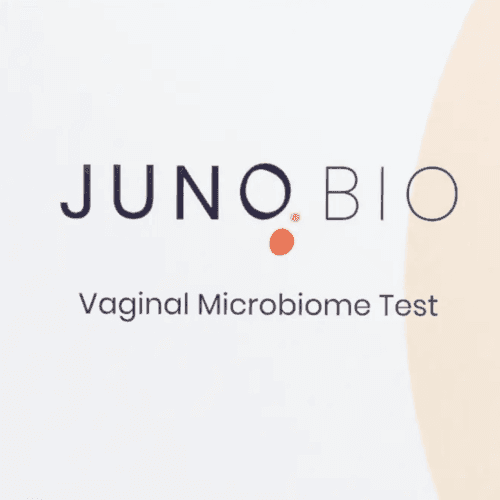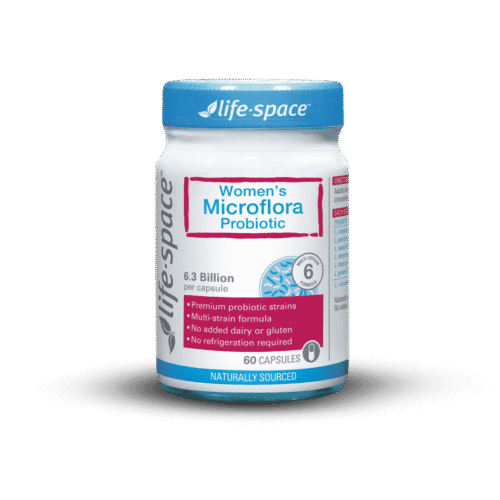Vaginal fissures and labial tears are surprisingly common, yet often misunderstood. A vaginal tear may feel like a sharp sting, a cut, or just persistent irritation that doesn’t go away. These tears can happen during sex, from dryness or infection, or seemingly out of nowhere.
In this guide, we cover the causes of vaginal fissures, what vaginal tear symptoms feel like, how to manage them at home, and when to see a specialist.
Vaginal cuts and tears aren’t a ‘disease’ or a medical condition – they are a symptom of something else.
1. What is a vaginal fissure?
A vaginal fissure is a split or crack in the vaginal or vulvar skin or mucosa. It can occur anywhere from the outer labia to inside the vaginal canal. You might feel a tear when it happens or notice symptoms later, like a burning sensation or bleeding.
Fissures are often minor and heal quickly, but some persist or keep recurring in the same spot. These injuries are typically mechanical or caused by inflammation, but deeper factors may also be involved.
2. Vaginal tear symptoms and how to recognise them
Vaginal tear symptoms can vary depending on depth, location and cause. Most people report:
- A sharp stinging or raw feeling, especially during urination
- Pain with penetration or wiping
- A sensation of a bruised vagina or dull ache
- Visible cuts or red patches
- Itching or irritation as the skin heals
Internal tears may not be visible, but they often present as discomfort with sex or tampon use. The full list of vaginal tear symptoms and treatments is broad, but with the right support, most fissures resolve without scarring.
3. Vulvar fissures treatment at home
Most minor vaginal fissures can be treated at home. A solid vulvar fissures treatment-at-home plan involves:
- Keeping the area clean and dry
- Avoiding irritants like soaps, douches, and friction
- Applying a safe, vulva-specific healing cream or balm
At My Vagina, we recommend Aunt Vadge’s Delicate Cuts Cream. It’s designed to support the healing of minor cuts without disrupting your vaginal flora. This carefully developed product is a cornerstone in many home care plans for simple labial or vaginal fissures.
People with recurrent vulvar or vaginal cuts and tears may benefit from seeing a practitioner who can assess oestrogen levels, gut function, nutrient status, or the vaginal microbiome.
4. What is a labial tears healing ointment?
A labial tears healing ointment is a topical product used to soothe and support the repair of delicate vulvar skin. Unlike general-purpose creams, a suitable healing ointment for labial tears must be:
- Non-irritating and pH-appropriate
- Free from antiseptics or fragrances
- Safe for external use on mucous membranes
Options like pawpaw ointment, aloe vera gel or vitamin E oil can also help protect and keep moisturise in the skin so it can heal for simple or one-off cuts and tears. Purpose-fit creams, such as Aunt Vadge’s Delicate Cuts Cream, are a good choice if cuts are recurrent. These formulations promote tissue healing and reduce inflammation while being appropriate for sensitive areas.
A healing ointment should not be inserted into the vagina unless prescribed by a healthcare practitioner.
5. Why does your labia feel ripped?
That feeling of a labia ripped or torn can occur from a number of triggers:
- Friction from sex, fingers or toys
- Dryness due to low oestrogen
- Yeast infections or other imbalances
- Skin conditions such as lichen sclerosus
- Physical trauma or scratching
Identifying the cause of the tear is the first step to healing. Many people assume it’s ‘just the way their body is’, but recurrent fissures have an underlying trigger. Addressing this is essential to prevent re-tearing.
Here in My Vagina’s specialist clinic, we are very focused on not only relieving symptoms but also understanding and treating the underlying causes. Without addressing the true cause of vulvar cuts and tears, when it goes beyond rough sex or other straightforward damage, they will return over and over.
6. Labia cut treatment options
Labia cut treatment includes rest, protection and restoring the skin’s natural barrier. Key strategies include:
- Avoiding any friction or penetration until fully healed
- Applying a healing ointment once or twice daily
- Using warm water and very mild soap only to wash the area
- Supporting your skin from the inside with zinc, vitamin C and protein
For dry or postmenopausal vulvas, oestrogen support may be needed. Infections like candida can also contribute to cracking and should be ruled out.
7. When a vaginal fissure won’t heal
Not all fissures are straightforward. If your tear doesn’t improve after a week or two of careful management, it’s time to look deeper.
Mystery cuts and tears may be caused by:
- Atrophic vaginitis from low oestrogen (try Fennelope)
- Candida or bacterial infections
- Contact dermatitis or allergies
- Autoimmune skin conditions
- Nutrient deficiencies
These types of fissures need more than just a healing cream. You may need vaginal hormone support, microbiome testing or a practitioner-designed treatment plan.
If you’ve tried everything and nothing is helping, you’re not alone. A consultation with a My Vagina specialist can help get to the bottom of it.
8. How to prevent vaginal fissures
The most effective long-term plan includes identifying your personal triggers and supporting vaginal skin resilience.
Good daily habits include:
- Washing gently with water only – use a specific vulva wash instead of harsh soaps, and never wash inside the vaginal entrance
- Using hypoallergenic laundry detergent
- Wearing cotton underwear and avoiding tight pants
- Avoiding friction during sex when not aroused or lubricated (important!)
Using a topical barrier cream regularly can protect vulnerable tissue. The full guide on how to prevent vaginal fissures includes these and other strategies.
9. Healing ointments for labial tears and when to use them
Healing ointments for labial tears are most useful when applied at the first sign of irritation. They help protect the skin and promote faster wound closure.
Use ointments:
- Before and after urination to protect from stinging
- After washing to trap in moisture
- Before bed to support overnight healing
- During flare-ups if you suffer from recurrent fissures
Always choose vulva-safe products and avoid anything that stings or burns. If a product causes discomfort, stop using it immediately and seek advice.
10. When to get help for a vaginal tear
A vaginal tear may seem like a minor issue, but if it keeps coming back, it’s a sign of a deeper imbalance.
Speak to a healthcare professional if:
- It doesn’t heal within 10-14 days
- There is bleeding or ulceration
- You suspect an infection
- You notice a visible lump, sore or blister
- The fissure keeps appearing in the same spot
My Vagina’s vulvovaginal naturopaths offer a thorough assessment and customised treatment for chronic cuts and tears. Once you have a clear diagnosis and treatment plan from your doctor, book a consultation if you’re stuck or in pain for supportive options and a fresh perspective.
What to do next
Vaginal fissures can be complex or straightforward, but they are treatable. Whether you’re dealing with a first-time vaginal tear or trying to manage chronic skin splits, the right tools and knowledge can make all the difference.
Start with a safe, effective labial tears healing ointment, apply the tips in this guide, and don’t hesitate to get help if you’re not healing. For many people, the right support is the missing piece.
Explore our product range, read our blog on vaginal tear symptoms and treatments, or ask your practitioner for help with personalised care.
References1–5
- 1.Carr PL, Felsenstein D, Friedman RH. Evaluation and management of vaginitis. J Gen Intern Med. Published online May 1998:335-346. doi:10.1046/j.1525-1497.1998.00101.x
- 2.Kennedy CM, Manion E, Galask RP, Benda J. Histopathology of recurrent mechanical fissure of the fourchette. International Journal of Gynecology & Obstetrics. Published online November 26, 2008:246-247. doi:10.1016/j.ijgo.2008.10.017
- 3.Eschenbach DA, Thwin SS, Patton DL, et al. Influence of the Normal Menstrual Cycle on Vaginal Tissue, Discharge, and Microflora. Clinical Infectious Diseases. Published online June 1, 2000:901-907. doi:10.1086/313818
- 4.Welsh BM, Berzins KN, Cook KA, Fairley CK. Management of common vulval conditions. Medical Journal of Australia. Published online April 2003:391-395. doi:10.5694/j.1326-5377.2003.tb05257.x
- 5.Mac Bride MB, Rhodes DJ, Shuster LT. Vulvovaginal Atrophy. Mayo Clinic Proceedings. Published online January 2010:87-94. doi:10.4065/mcp.2009.0413

Get a fresh perspective with a qualified, experienced vulvovaginal specialist naturopath.
This product has multiple variants. The options may be chosen on the product page
The most comprehensive vaginal microbiome test you can take at home, brought to you by world-leading vaginal microbiome scientists at Juno Bio.
Easy-to-use BV and AV treatment program.

Promote and support a protective vaginal microbiome with tailored probiotic species.







